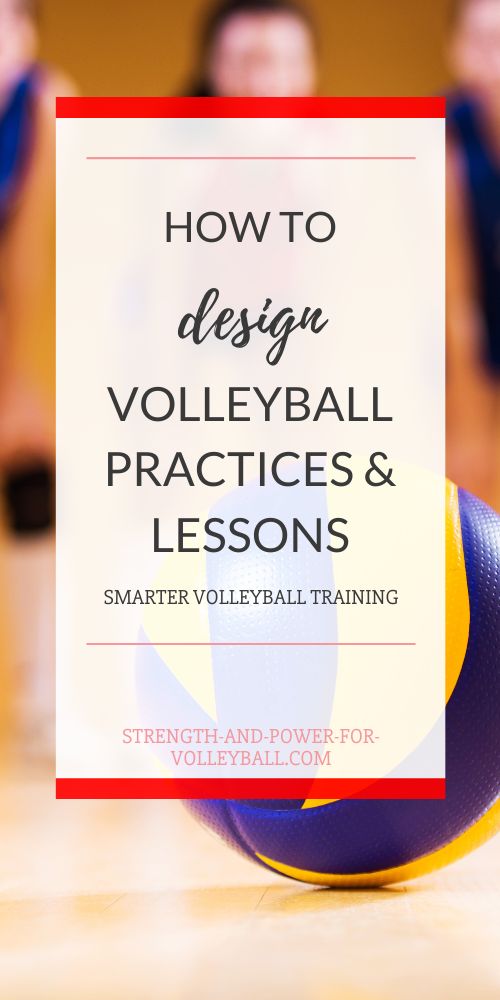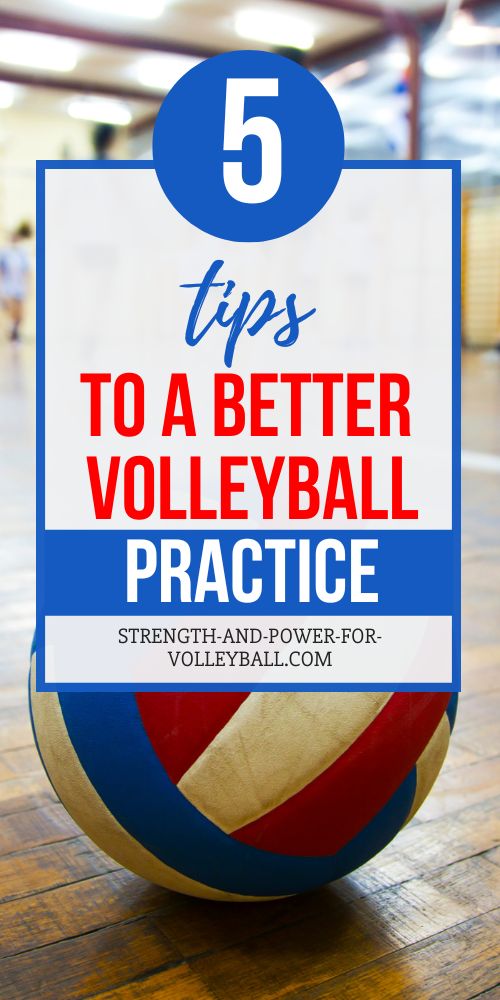Volleyball Lesson Plans
How to Plan a Volleyball Practice
Volleyball lesson plans for coaches.
Use the follow guide for planning your volleyball practices.
When planning a volleyball lesson, consider things such as the skill level of the players, the time available, and the specific skills to focus on.
Here are some general guidelines for creating a volleyball lesson plan.
Individual vs Team Volleyball Lesson Plans
Individual Practice Plans
Here is a guide for giving a beginner player a volleyball lesson.
Before the lesson starts, define what will be the focus of the lesson. Also, consider how much time you have available for the lesson.
If the athlete is a setter, then define what skills are specifically needed to worked on.
For a beginner setter, the focus could be on hand position and footwork.
A typically practice may look something like this.
Warm Up. Do a series of self-setting drills. If there's a wall available, set to the wall. Focus on maintaining the same hand position throughout the movement. You could warm up the feet by practicing the footwork patterns for setting.
Skills Training. The setter sets the ball to a target using the correct footwork. The coach tosses the ball to the setter. Mix in tossing the ball in a way that makes the setter move to the ball and use specific footwork patterns for setting.
Game-like drills. The setter sets a ball that's passed by a receiver. The goal is to have the setter anticipate the ball coming off the receivers arms. Have the receiver pass the ball in such a way that forces the setter to use a specific footwork pattern. For example, pass the ball off the net to get the setter to use the footwork pattern for coming off the net to set.
Team Practice Plans
To plan a practice, consider things like the length of practice time available, the skill level of the team, and what you want the team to achieve for the day.
A typical team practice may look something like this.
Dynamic warm ups. This involves activating the nervous system through a series of movements that will lengthen and strengthen muscles through movement.
Speed/Strength Training. Drills that focus on improving speed, strength, and coordination will help volleyball players develop skills quicker. It's not required, but if you have time, it's good to include agility drills that will help the athletes improve at volleyball faster.
Passing and Serving. Work on serving and passing individual skills. Next, have the team do a game-like drill that involves serving and passing.
Hitting, Blocking, and Defense. Have the team focus on the individual skills of hitting, blocking, and defense. Next, have the team perform game-like drills that involve the skills that you had just focused on.
Scrimmages. The last part of practice should be a scrimmage so players have an opportunity to perform what they just learned in real-game situations.
What's most important is to keep the practice engaging and fun. If your athletes aren't enjoying practice, then it will be much more difficult for your team to make progress and become better volleyball players.
Intermediate/Advanced Level Volleyball Practice Plans
Individual Practice Plan
For more advanced lessons, the time may be spent more on specific skills and situations. For example, an advanced setter may spend most of the lesson focused on being deceptive with their setting. For the advanced hitter, they may focus most of the time on contacting the ball higher.
Team Practice Plan
For advanced volleyball team practices, the coach may decide to have most of the practice focused on just one or two skills. Maybe just 5 minutes each for serving, passing, and defense. Then the rest of the practice is focused on hitting and blocking. As teams advance to higher levels of play, strength and conditioning will become even more important.
5 Tips for Volleyball Practice Plans
Here is 5 tips to help you design better volleyball practice plans.
1. Don't leave out skills. Even if it's just 5 minutes a day, it's important to focus on performing the skill every day. Just 5 minutes a day will help your memory skills sharpen.
2. Include speed and agility. Quick feet will help you get in position faster. Making successful plays is all about positioning. If you can't get there in time, then you can't make the play. Speed and agility is something that can be included in every practice.
3. Have a clear focus of what is to be accomplished for each practice. It may be a blocking practice. Or maybe all the outside hitters are focused on getting good at hitting the ball down the line. Every practice should have a clear intent of focus. This isn't to say you shouldn't focus on other skills. The point is to not just go through the motions. Have your team focus on accomplishing something every practice.
4. Don't make the mistake of conditioning so hard that athletes are too fatigued to perform skills correctly. For skills training, the skills should be performed when the athletes are fresh. Focus on performing skills with the correct technique. When athletes are fatigued, it can be difficult to use the correct technique. So, don't make the mistake of trying to work on skill training immediately after a grueling strength and conditioning workout.
5. Play volleyball fatigued. This tip will sound like it contradicts the previous tip. There will be times when your team competes in long intense match or tournaments. There will be times when they will need to know how to play when fatigued. So, it can be good to have a special time to train for these situations.
If you enjoyed these tips and would like to keep it close to you at any time, just save this pin to your Pinterest Volleyball Training Board.

